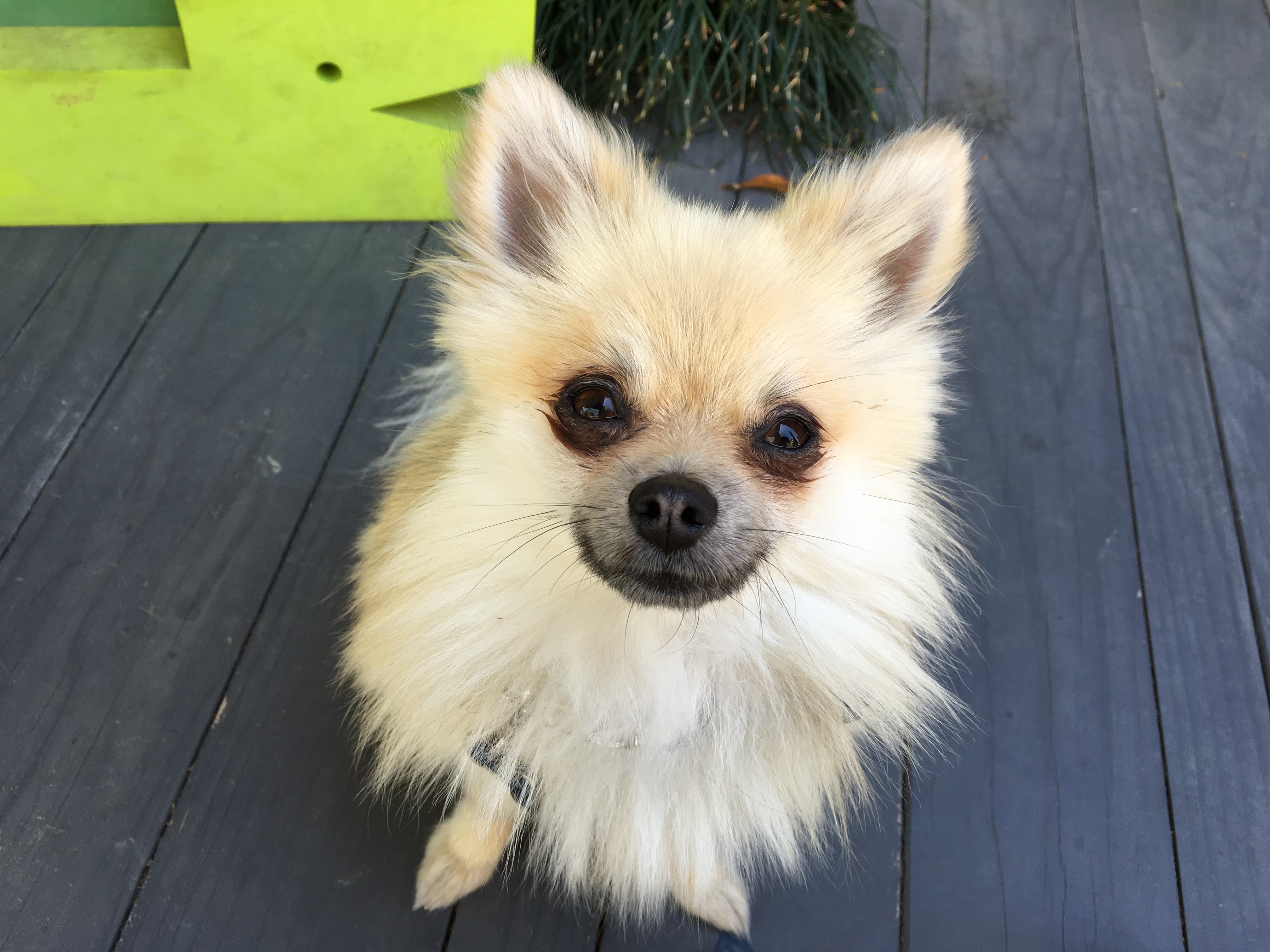Training a Pomeranian to Listen to and Respect His Guardians
By: David Codr
Published Date: May 4, 2016
Scoot is a one-year-old Pomeranian in Los Angeles who doesnt recall on command, runs away when humans attempt to pick him up, runs out of open doors and has some potty issues.
Usually dogs I work with greet me at the door in an exuberant display of excitement. Scoot decided to take a vastly different approach.
Scoot’s guardians and I started out the session in their back yard where we chatted about his daily routine since being adopted a few months ago. In the course of that discussion I learned that Scoot didn’t really have many rules and demanded attention from his guardians by jumping up and licking their faces until they complied.
While loving your dog is something every guardian should do, not providing your dog with rules, boundaries and limits can cause them to think that they have the same rights and privileges as their humans. If a dog considers itself to be your equal, then listening or following your commands is optional.
To help Scoot’s guardians transition into a leadership role that will be recognized by the dog, I went over some simple rules and boundaries. Each time we correct a dog with good timing, we reinforce a healthy leader follower dynamic. I always aim to have my client’s dogs feel like they are a part of the family, just with less authority than any of the humans.
One of the best techniques I have developed in this regard is something I like to call, Petting with a Purpose. This involves asking the dog to sit, come or lay down before petting it.
If Scoot’s guardians get into a habit of asking their dog to sit, come or lay down before they pet him, they will end up reinforcing a healthy Leader / Follower Dynamic without thinking about it every time they pet their dog.
I suggested that the parents tell their three-year-old princess that “petting a dog is how we say thank-you to them.’ I have had countless guardians with young children report that they adapted to that ideology pretty easily.
Petting with a Purpose is probably the most impactful and easy change any dog guardian can make to deepen their dog’s respect for them as authority figures. Respect for the guardians as authority figures will help eliminate or greatly reduce all of Scoot’s behavior problems.
Another great way to change a dog into adopting a follower’s mindset is to add some rules and boundaries into its daily life. Not allowing the dog on furniture without permission, asking it to sit before letting it in or out doors, communicating that it needs to keep a respectful distance from humans with food and other rules all help the dog start to see his humans as having more rank or status. Additionally, each time they correct him with good timing, they will be demonstrating their leadership in a very practical way.
Next I went over a series of Escalating Consequences that Scoot’s guardians can use to disagree with the dog any time it breaks the new rules or boundaries. I stressed how important it all be for them to react immediately. A good rule of thumb is 3 seconds. That’s the window of time that you have to correct or reward a dog after doing something so that they associate it with the actual action.
Because the family has a three-year-old, Scoot had discovered that he could pick up one of her toys and get the humans to chase him for it. Dogs love being pursued this way, but each time we do, it reinforces that its a good way to get attention. This quickly becomes a self reinforcing behavior so I went over a basic dog training exercise; the drop.
By practicing the drop with low value items enough, Scoot’s guardians can easily train him to cooperate and drop any item on command. I suggested they focus on this training for the next week or two whenever they see him with a low value item.
Next I went over a simple recall exercise. Training the dog to come on command is something that is much more advisable than trying to sneakily snatch the dog as they had been doing. Each time we trick or snatch up a dog in a sneaky way, we damage the trust between and and dog. You never want to train a dog to not trust you. But racing after or grabbing a dog when it doesn’t expect it is exactly what that sort of interaction will accomplish.
It was great to see how quickly Scoot trotted over (little guy has a great little prance-walk) and sat down in front of whoever called him. This is a great activity to practice with the family’s three-year-old. I suggested that the parents occasionally let their daughter run the exercise to maximize her interest in participating.
I also suggested that they pick a new trick or command and incorporate teaching one to the dog each week while letting their daughter come up with fun command words. This is another great way to get children more actively invested in their relationship with the dog.
We finished things up by adding more structure to meal time to help the dog practice self restraint and the guardians take a more authoritative position in the dog’s eyes.
By the end of the session, Scoot had transitioned from jumping up for attention to sitting in front of his intended petter, was watching his guardians for cues and coming when called right away.
I suggested that the guardians adopt a strict observance of the new rules and techniques for the next two weeks. If they can maintain good timing with their rewards and corrections and practice the new techniques, Scoot will quickly adapt to the new behavior that his guardians want out of him.
Categorized in: Dog Behavior


